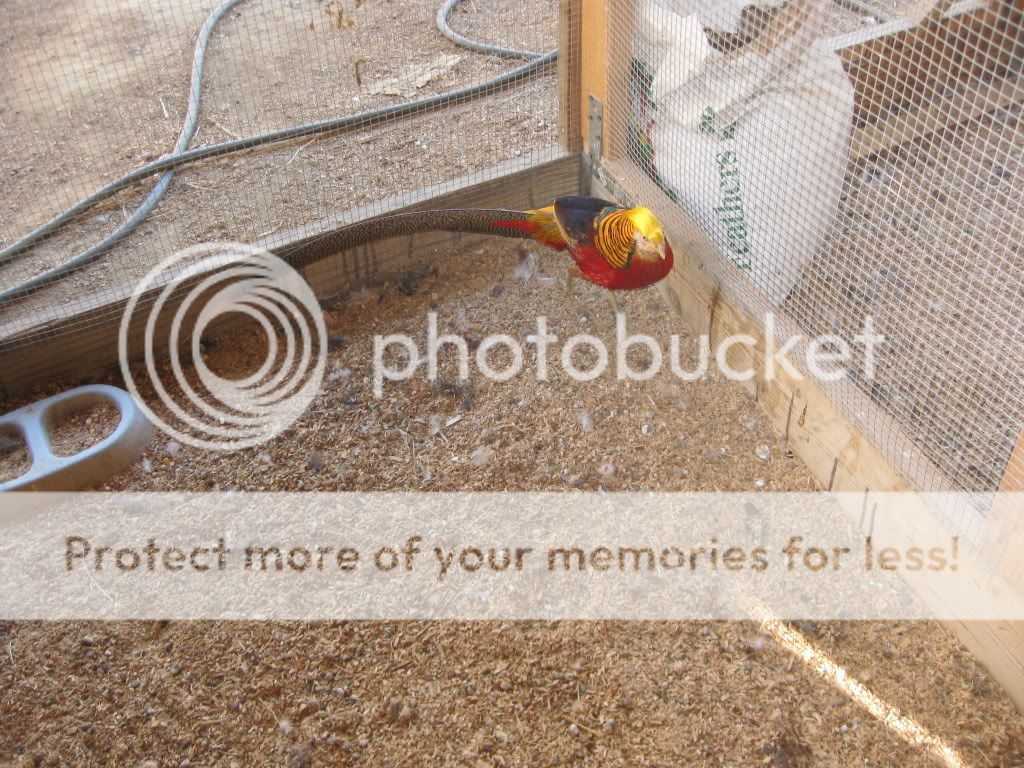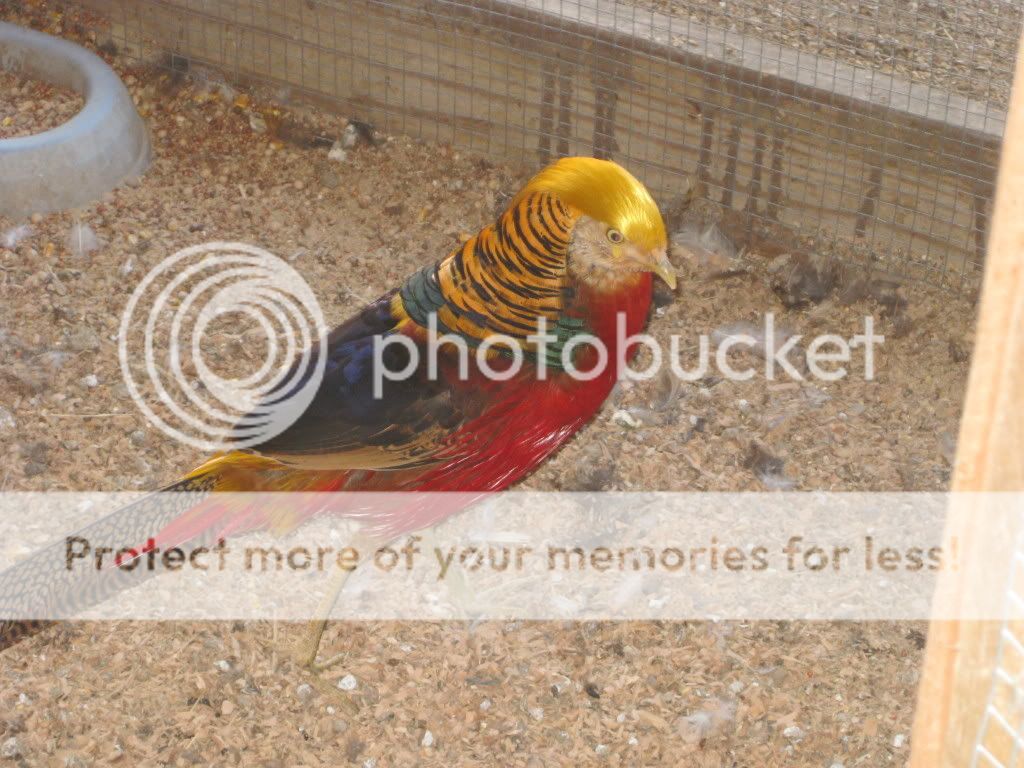Quote:
Good for you.
Quote:
This has been attempted with many avicultural groups, but failed miserably. There are few studbooks, but too few galliforme aviculturists care to participate. Several years ago, I spent a fortune trying to assemble an avicultural plan similar to what we use in zoos. We would have an online database that aviculturists can pull from and try to maintain pure species. It blew up in my face and was quite embarrassing. A lot of it had to with comments like Mahonri and what you say a couple of paragraphs down.
Perhaps we will have an influx of a younger generation that will be aware of habitat destruction, be aware of extinctions, be more scientific orientated, and will want to pursue a project like this. If we don't, kiss many more captive galliformes good-bye.
Quote:
Too few people care, see above. I'd love it if this could happen, I've been doing it for years and know of a select few who also do it. I'd love it if keeping wild galliformes was regulated and we were forced to keep records, would weed out a lot of bad apples.
Quote:
Sometimes it would be better for me to just throw my hands up and say to hell with it folks, they are your birds, do what you want!! However, I worry about the future of wild galliformes in captivity. I've spent the majority of live fighting for responsible aviculture of wild galliformes and not planning to stop anytime soon. When dealing with these birds, an attitude of "breed what you want" is careless. How many zoos out there are breeding Chimps to Bonobos? None. There are probably fewer Golden Pheasants than there are Chimps, yet it is ok to breed them with whatever?!
Quote:
A good breeder has to start somewhere. This forum is wildly popular and no question, the Golden Pheasant is going to garner a great deal of attention. A newbie isn't going to know how to find good breeders (a term I hate btw, what makes a good a breeder? a person who breeds a lot of birds or someone who breeds a small number but keeps them in natural environs and provides quality care & diet?). They may eventually find some pure birds, but in the meantime, (not knowing what they have) they are breeding their birds and they are out in the "market" to pollute the bloodlines.
Quote:
I'm not going to deny that there was subspecies bred (and even pure species) to create the domestic strains of Coturnix. I would love someone take the challenge and do some DNA work on skins of wild birds v. captive birds to see what/how they came about. Coturnix are pretty far gone to the domestication side of things and are almost not relevant in the realm of aviculture. However, should a pure race of Coturnix cotunix ever be imported into the US, I would hope that it would be kept seperated from the domestic stock of Coturnix and bred as a wild species.
Regarding the work with crossing Coturnix with Button, I would consult some of Johnsgard work and also some journals before attempting. I've seen, but can't think of it right off hand, of some results in attempting this.
Not to burden the point about captive galliformes and mis-management, but I can list nearly 100 species and subspecies of galliformes that once existed in American aviculture, but are now extinct in our aviaries. Too few people care to take the time to study the natural history of these birds: the descriptions of subspecies, their evolutionary lineage, natural diets, habitats, breeding habits, etc. They are kept as if domestic poultry and bred like they will never disappear (yes, there is bad thing in breeding too much, particularly with a wild species, managed breeding is best).
Enjoy the debate, no ill intentions.
Dan
Good for you.
Quote:
This has been attempted with many avicultural groups, but failed miserably. There are few studbooks, but too few galliforme aviculturists care to participate. Several years ago, I spent a fortune trying to assemble an avicultural plan similar to what we use in zoos. We would have an online database that aviculturists can pull from and try to maintain pure species. It blew up in my face and was quite embarrassing. A lot of it had to with comments like Mahonri and what you say a couple of paragraphs down.
Perhaps we will have an influx of a younger generation that will be aware of habitat destruction, be aware of extinctions, be more scientific orientated, and will want to pursue a project like this. If we don't, kiss many more captive galliformes good-bye.
Quote:
Too few people care, see above. I'd love it if this could happen, I've been doing it for years and know of a select few who also do it. I'd love it if keeping wild galliformes was regulated and we were forced to keep records, would weed out a lot of bad apples.
Quote:
Sometimes it would be better for me to just throw my hands up and say to hell with it folks, they are your birds, do what you want!! However, I worry about the future of wild galliformes in captivity. I've spent the majority of live fighting for responsible aviculture of wild galliformes and not planning to stop anytime soon. When dealing with these birds, an attitude of "breed what you want" is careless. How many zoos out there are breeding Chimps to Bonobos? None. There are probably fewer Golden Pheasants than there are Chimps, yet it is ok to breed them with whatever?!
Quote:
A good breeder has to start somewhere. This forum is wildly popular and no question, the Golden Pheasant is going to garner a great deal of attention. A newbie isn't going to know how to find good breeders (a term I hate btw, what makes a good a breeder? a person who breeds a lot of birds or someone who breeds a small number but keeps them in natural environs and provides quality care & diet?). They may eventually find some pure birds, but in the meantime, (not knowing what they have) they are breeding their birds and they are out in the "market" to pollute the bloodlines.
Quote:
I'm not going to deny that there was subspecies bred (and even pure species) to create the domestic strains of Coturnix. I would love someone take the challenge and do some DNA work on skins of wild birds v. captive birds to see what/how they came about. Coturnix are pretty far gone to the domestication side of things and are almost not relevant in the realm of aviculture. However, should a pure race of Coturnix cotunix ever be imported into the US, I would hope that it would be kept seperated from the domestic stock of Coturnix and bred as a wild species.
Regarding the work with crossing Coturnix with Button, I would consult some of Johnsgard work and also some journals before attempting. I've seen, but can't think of it right off hand, of some results in attempting this.
Not to burden the point about captive galliformes and mis-management, but I can list nearly 100 species and subspecies of galliformes that once existed in American aviculture, but are now extinct in our aviaries. Too few people care to take the time to study the natural history of these birds: the descriptions of subspecies, their evolutionary lineage, natural diets, habitats, breeding habits, etc. They are kept as if domestic poultry and bred like they will never disappear (yes, there is bad thing in breeding too much, particularly with a wild species, managed breeding is best).
Enjoy the debate, no ill intentions.
Dan



